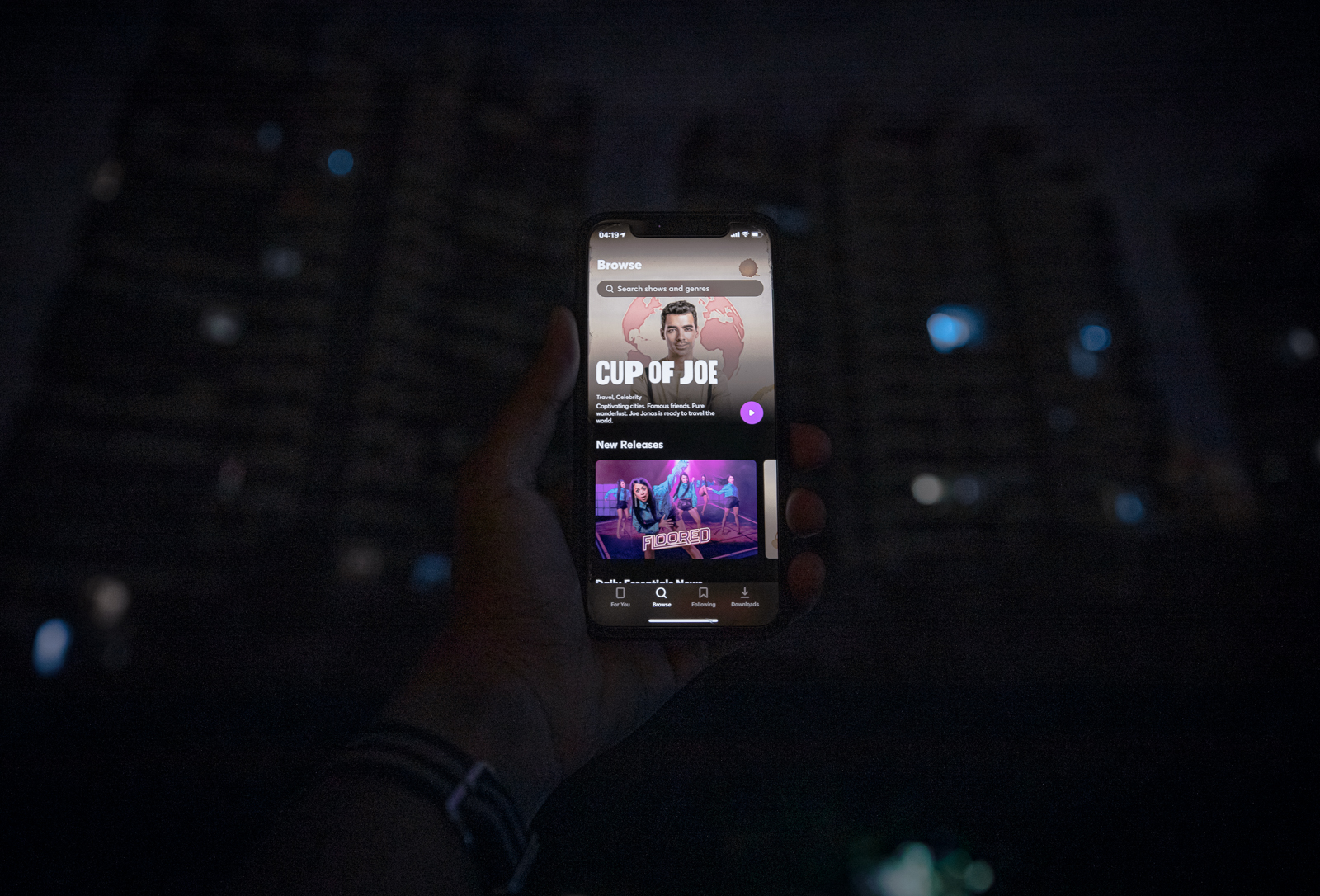Second Take: Quibi bites off more than it can chew in attempt to make streaming more accessible

The new streaming app Quibi offers a variety of short-form content and features creators such as Joe Jonas and Chrissy Teigen. (Tanmay Shankar/Assistant Photo editor)
By Natalie Brown
April 27, 2020 3:10 p.m.
Quibi is offering content that is less than half the length of a television show – at half the quality, too.
Launched on April 6, brand-new streaming service Quibi – short for “Quick Bites” – boasts easily digestible content and features many original TV series with episodes shorter than 10 minutes in length. Reminiscent of services like YouTube and Netflix, Quibi adds to the plethora of entertainment families have at their disposal with mandatory quarantine measures in effect. However, while it doesn’t have too much to offer as a stand-alone application, it can be an effective tool to gauge audience interest and conduct market research or serve as a creative outlet.
Quibi is available exclusively on mobile devices, priced at $4.99 per month with advertisements or $7.99 per month without ads. Unable to integrate multiple users onto a single account like Netflix, Quibi provides an individualized experience to the user and prevents password-sharing and shared accounts. One of its most advertised features is how users can seamlessly transition from a horizontal view to a vertical view, with different angles and camera shots presented on both – however, it’s the platform’s content that’s the most interesting.
[Related: A quick guide to some of Disney+’s original content]
It hosts a variety of original shows including a reboot of the popular 2000s show “Punk’d,” “Chrissy’s Court,” location-oriented news snippets and a pasta-making documentary series entitled “Shape of Pasta.” And yet, the extremely short runtimes do the shows an injustice as the simple narratives are unable to be fully fleshed out, resulting in a product that is more akin to clips or highlights from an actual show instead of a complete storyline.
So while Quibi’s shows and features are unique to its application, the general feel of the app seems like an amalgamation of Netflix and YouTube’s content.
Similar to Netflix, Quibi’s shows are aesthetically pleasing and have a whole cast and crew working toward creating the content – much like a regular film or TV show. But despite a high production value and A-list celebrities, the content is more similar to that of specific YouTube conglomerates including BuzzFeed and Vice.
The only difference? These YouTube channels and their sub-channels produce great quantities of serial videos covering a similar array of pop culture topics – without charging the user a penny.
Upon its launch, Quibi sought to provide these short pieces of entertainment that could be watched while on lunch breaks, waiting in lines or simply as a means of passing 10 minutes quickly. While this original purpose seemed promising and valuable for a society that is getting busier, more individualistic and fast-paced, Quibi can only seem counteractive in adjusting to life under tight quarantine restrictions.
With the spread of COVID-19 and its effects on society, depth and substance is what’s needed during times of uncertainty when people are meant to be putting society under a microscope. The majority of the population has an overwhelming amount of unprecedented free time allowing them to consume entertainment in larger and lengthier quantities.
A simple activity to bring family members together, watching entertainment in groups also allows for a greater sense of community. Quarantined in their homes, families are likely looking for entertainment that they can watch not only together but on a larger screen – this shared experience is one that Quibi can’t offer.
[Related: Recent Rewinds: Curation of family-friendly Disney+ content shows potential flaws, hypocrisy]
Quibi does have some promising implications, however. It could prove to be an integral tool in which people can channel their creativity in a much smaller and low-stakes environment. Instead of trying to pitch shows to rigid networks or trying to receive massive amounts of funding, the brevity of each Quibi series allows creators to take more creative risks while still putting out professional content.
The low-stakes environment is not only beneficial to creators, however. Networks could use Quibi as a tool in order to monitor how specific shows and topics are being received by the public, thus dictating what kinds of shows or films should be produced on a larger budget. But while this paves the way for some entertaining shows on Quibi, it certainly doesn’t seem worth the price or energy spent looking at devices when longer pieces of content pose much more thought-provoking questions in a time of a global pandemic.
True fans of entertainment would already know where to look to find similar content on the world’s plethora of streaming services – for double the price but perhaps triple the quality.

